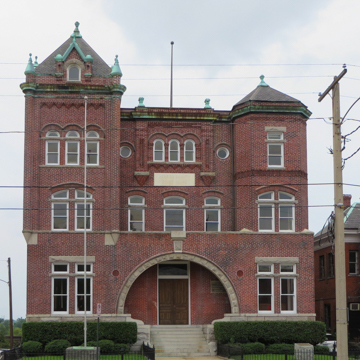The Henrico County government was located in the city of Richmond from 1752 until 1974, when it moved to the suburbs. The county moved to this site in 1843, and by 1895 the building was outmoded. Not desiring to repeat the cost overruns of Richmond City Hall, the county commissioners specified that the cost was not to exceed $20,000. They accepted the designs of the German-born and -trained architect Ruehrmund, who came to the United States in 1881 and shortly thereafter settled in Richmond. His career was long and profitable. The twin-towered facility is in the popular Richardsonian Romanesque style, with round arches and thick brick walls. The penury of the commissioners led to a rather tame design, lacking the vibrancy of other courthouses of the period.
You are here
Henrico County Government Complex and Courthouse
If SAH Archipedia has been useful to you, please consider supporting it.
SAH Archipedia tells the story of the United States through its buildings, landscapes, and cities. This freely available resource empowers the public with authoritative knowledge that deepens their understanding and appreciation of the built environment. But the Society of Architectural Historians, which created SAH Archipedia with University of Virginia Press, needs your support to maintain the high-caliber research, writing, photography, cartography, editing, design, and programming that make SAH Archipedia a trusted online resource available to all who value the history of place, heritage tourism, and learning.





